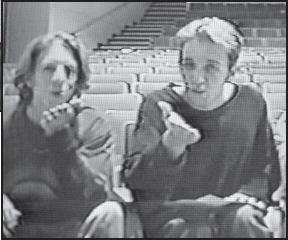No Easy Answers (16 page)
Authors: Brooks Brown Rob Merritt

We were hoping it would turn out that Dylan wasn't involved. But logic told us otherwise. Dylan had skipped class with Eric. No one had seen or heard from him since the shooting started. It looked bad.
My fears were confirmed as I saw Dylan's name appear on the screen. He was one of two suspects; the other was Eric. I felt my heart sink into the floor.
Right at that moment, the phone rang. It was my mother. She was with the Klebolds, standing outside the house. A police detective was already at the Klebold home.
“Have you heard anything?” she asked me. “Do they know who the shooters are?”
I took a moment. “Mom, it's Dylan.”
“Are you sure? I mean, do you know that for sure or is that just what someone said?”
“Mom, they just showed his name on the TV. It's Dylan.”
While their parents and friends were in anguish over what was happening, Eric and Dylan were in the library, alone amidst the carnage they had made.
Ten more people were now dead. Dave Sanders—the teacher who had warned Aaron Brown and hundreds of other students in the cafeteria to run—was still alive, but had been badly wounded in the hallway. He had made it to one of the science rooms, where he now lay bleeding to death as students tried frantically to save him. He would be dead in another few hours, becoming Eric and Dylan's thirteenth victim.
Ten students had been killed in the Columbine library. Shortly after Patti Nielsen made her 911 call, Eric and Dylan came through the library doors with guns in hand. They took their time picking off victims one by one, shooting under desks, executing kids, and laughing.
The police knew this because Nielsen's 911 call was still open. She had set the phone down and taken cover under the library counter, so the receiver was still picking up everything. Even though fire alarms were ringing throughout the school, thanks to the multiple pipe bombs Eric and Dylan had lobbed into the cafeteria, police could hear the screams, the gunshots, and the taunts.
The police weren't moving. Later they explained that they had been trained to establish a perimeter around a suspect, ensuring that there could be no escape. However, no one was actually entering the school to try to engage the shooters, even though the 911 call offered a clear indication of where they were in the building.
Because police weren't pressuring them, Eric and Dylan left the library—allowing thirty-four students to escape out the back door in the process—and went downstairs to the cafeteria. Security cameras recorded Eric attempting to set off one of the failed propane bombs by shooting at it with his shotgun. He had no luck. The tape also captured Dylan lobbing one last pipe bomb, creating a fire in the cafeteria. Then the pair returned to the library for the final time.
One of the first things Aaron did once he got home was go to the computer and make sure we had a saved copy of Eric's Web site. Somehow, even amidst the shock of what was happening, we knew we had something that people needed to know about.
I remember hearing one of the television reporters say that, according to police and school officials, “the suspects had no history of violence.” That upset me. So we called the news hotline for one of the TV stations, wanting to correct them. When I told them about the Web pages and my history with Eric Harris, they asked if they could send a crew out to speak with me.
Half an hour later, reporter Ward Lucas from Channel 9 was knocking on our door.
We sat on the porch, and I told him what I knew. I showed him copies of Eric's Web site. I told him about my last meeting with Eric in the parking lot. I talked about the Trench Coat Mafia, and about how the group had been bullied by the jocks. Basically, I was rambling, trying to get points across even though I was still freaked out by everything.
Lucas was very kind. He said what he could to make me feel at ease. He thanked me for having come forward. Looking back, I think he felt sorry for me.
Once that interview hit the airwaves, other reporters started calling. The
Denver Post
wanted to talk. So did the
Rocky Mountain News.
Clips from Ward Lucas's interview with me were on CNN. For the first time, people were hearing what the police had known for a long time: Eric Harris was a dangerous kid.
Through it all, we still didn't know the details of what was happening at Columbine. We still watched events unfold on TV. I saw the live shot of Patrick Ireland crawling out the library window and being rescued. He had been shot multiple times, in the head and elsewhere.
The police were still waiting outside the school. We knew nothing about Eric and Dylan's fate. But deep down, I knew how this was going to end.
Perhaps Eric and Dylan had dreamed of dying in a glorious final shootout with police, and were disappointed that none were coming in. No one will ever know.
Four hours after the shooting began, Eric and Dylan would be found dead in a corner of the library—killed by self-inflicted gunshot wounds to the head.
The carnage they left was staggering. By now, Dave Sanders had succumbed to his injuries, despite the efforts of students who dialed 911, put up a sign in the window saying “1 Bleeding To Death,” and waited for hours for help to come.
The ten library victims included Cassie Bernall, Steven Curnow, Corey DePooter, Kelly Fleming, Matthew Kechter, Daniel Mauser, Isaiah Shoels, John Tomlin, Lauren Townsend, and Kyle Velasquez. Nearly two dozen more students were injured.
I knew Eric and Dylan were dead long before they announced it on TV. Still, actually hearing the newscasters say it made it real.
My friends were gone. They had murdered other friends before they went. They had set off bombs and shot at the cops.
Yesterday we had skipped class to eat lunch together at McDonald's.
I couldn't even get my mind around something like that.
Parents were gathering at Leawood Elementary School, waiting for lists to be put up of kids who had been accounted for by the authorities. They waited for school buses that might or might not have been carrying their children out of danger.
Some parents waited through the night, finally realizing after the last bus had left that their children hadn't made it.
It wouldn't be until the next day that we would hear confirmed lists of the dead. The bodies wouldn't even be removed from the school that night. Students and parents alike could do little more than guess about who had lived and who hadn't.
Our family survived the attack. But another nightmare was just beginning.
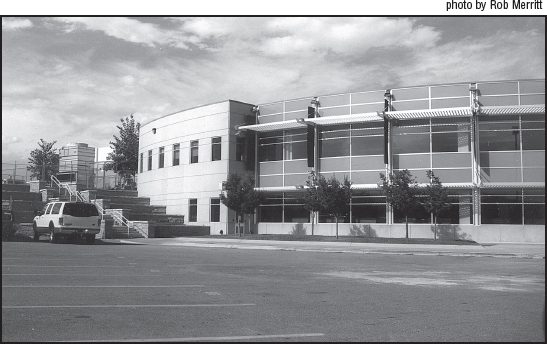
The exterior of Columbine High School near the west entrance. Eric Harris and Dylan Klebold would begin their shooting rampage of April 20, 1999 in the area near the top of the stairs at left before entering the school.
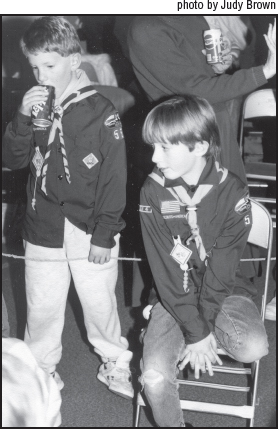
Dylan Klebold (left) and Brooks Brown, age eight, attend a meeting of the Cub Scouts.
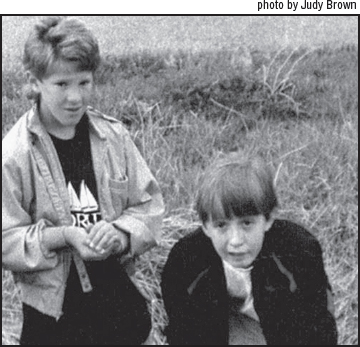
Brooks (right) and Dylan enjoy a moment of playing together in the park during their elementary school days.
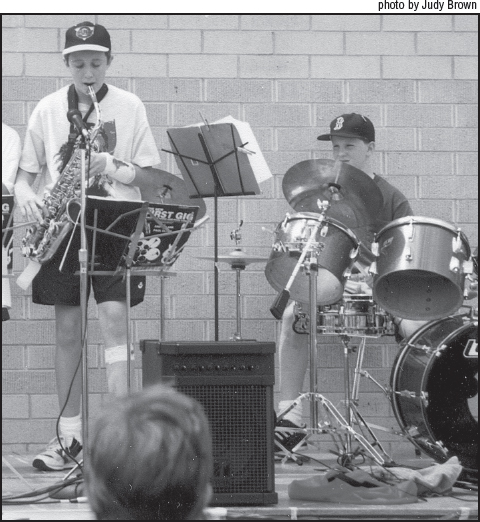
As young boys in Littleton, one of the interests Brooks and Dylan shared was a love of music. In this photo, the two sixth-grade boys perform in a band at a local talent show. Brooks, left, was on saxophone, while Dylan played the drums.
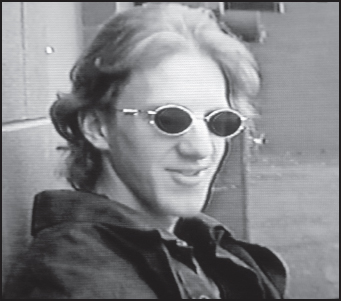
Dylan, age seventeen, shares a memory of the high school theatre program as Brooks Brown records him behind Blackjack Pizza, where Klebold and Eric Harris held part-time jobs, in late 1998.

Dylan and Brooks use the
Frankenstein
program to “roast” their fellow cast and crew members on a tribute video they recorded in late 1998.
